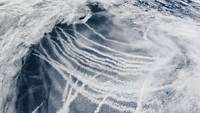Advertisement
Grab your lab coat. Let's get started
Welcome!
Welcome!
Create an account below to get 6 C&EN articles per month, receive newsletters and more - all free.
It seems this is your first time logging in online. Please enter the following information to continue.
As an ACS member you automatically get access to this site. All we need is few more details to create your reading experience.
Not you? Sign in with a different account.
Not you? Sign in with a different account.
ERROR 1
ERROR 1
ERROR 2
ERROR 2
ERROR 2
ERROR 2
ERROR 2
Password and Confirm password must match.
If you have an ACS member number, please enter it here so we can link this account to your membership. (optional)
ERROR 2
ACS values your privacy. By submitting your information, you are gaining access to C&EN and subscribing to our weekly newsletter. We use the information you provide to make your reading experience better, and we will never sell your data to third party members.
Environment
If started, geoengineering would be hazardous to stop
by Jyllian Kemsley
January 29, 2018
| A version of this story appeared in
Volume 96, Issue 5
One way to limit global warming, in addition to reducing emissions of greenhouse gases, is geoengineering—altering the climate through approaches such as injecting sunlight-reflecting sulfur particles into Earth’s stratosphere. Once started, however, an abrupt end to stratospheric aerosol injection (SAI) could be catastrophic for biodiversity, suggests new research led by Christopher H. Trisos of the University of Maryland (Nat. Ecol. Evol. 2018, DOI: 10.1038/s41559-017-0431-0). Trisos and colleagues computationally modeled what would happen if SAI began in 2020 by injecting 5 teragrams of SO2 per year, then maintained at that level until abruptly cutting off in 2070, perhaps because of a change in political will. The researchers observed mixed effects on biodiversity with implementation. Abrupt termination, however, would mean far faster climate change than most species would be able to adapt to. “Thus the adverse impacts of unsustained climate counteraction through SAI are likely to be around three times higher than the problem it is attempting to solve,” writes the University of East Anglia’s Phillip Williamson in a commentary that accompanies the paper.



Join the conversation
Contact the reporter
Submit a Letter to the Editor for publication
Engage with us on Twitter